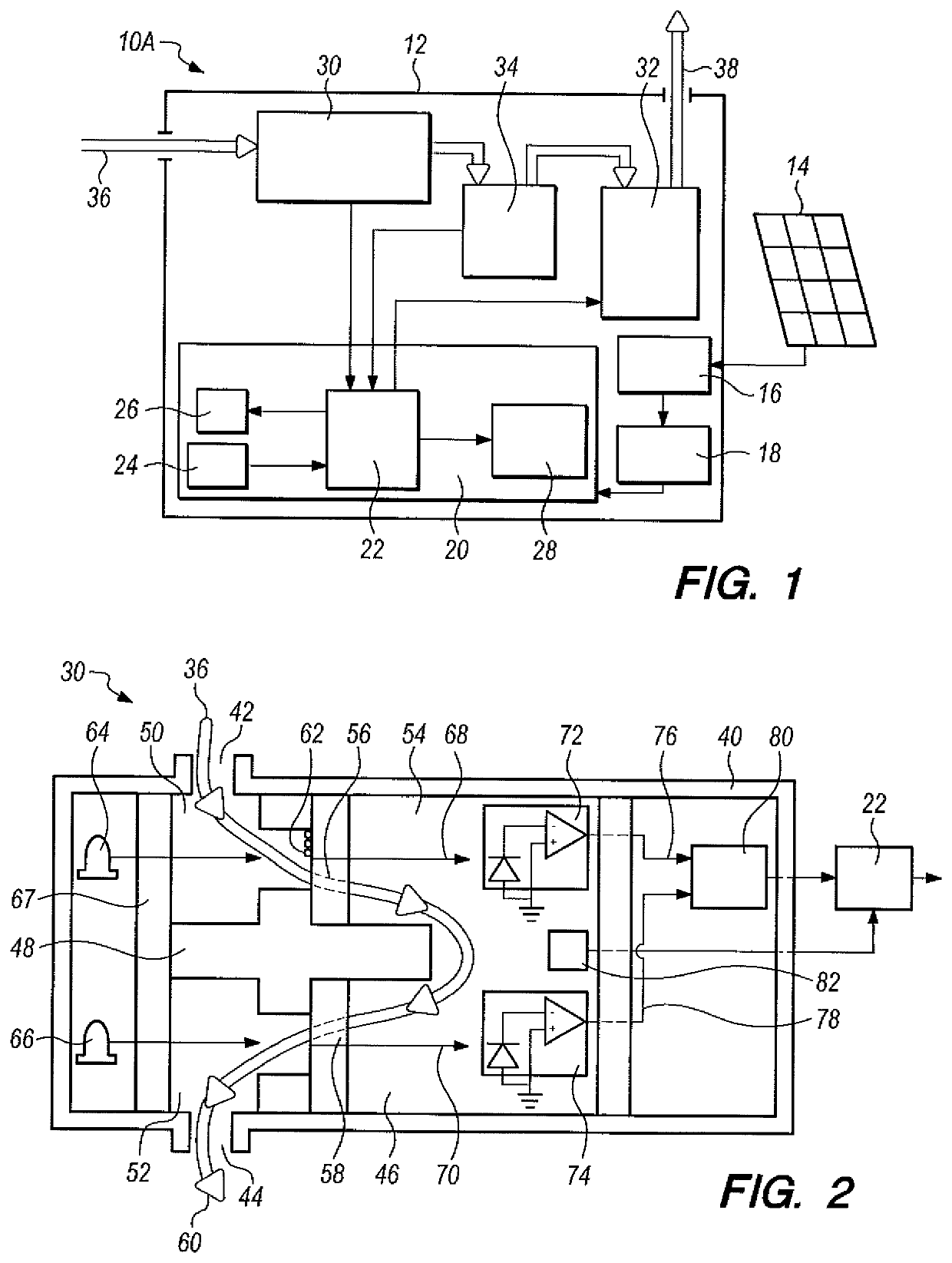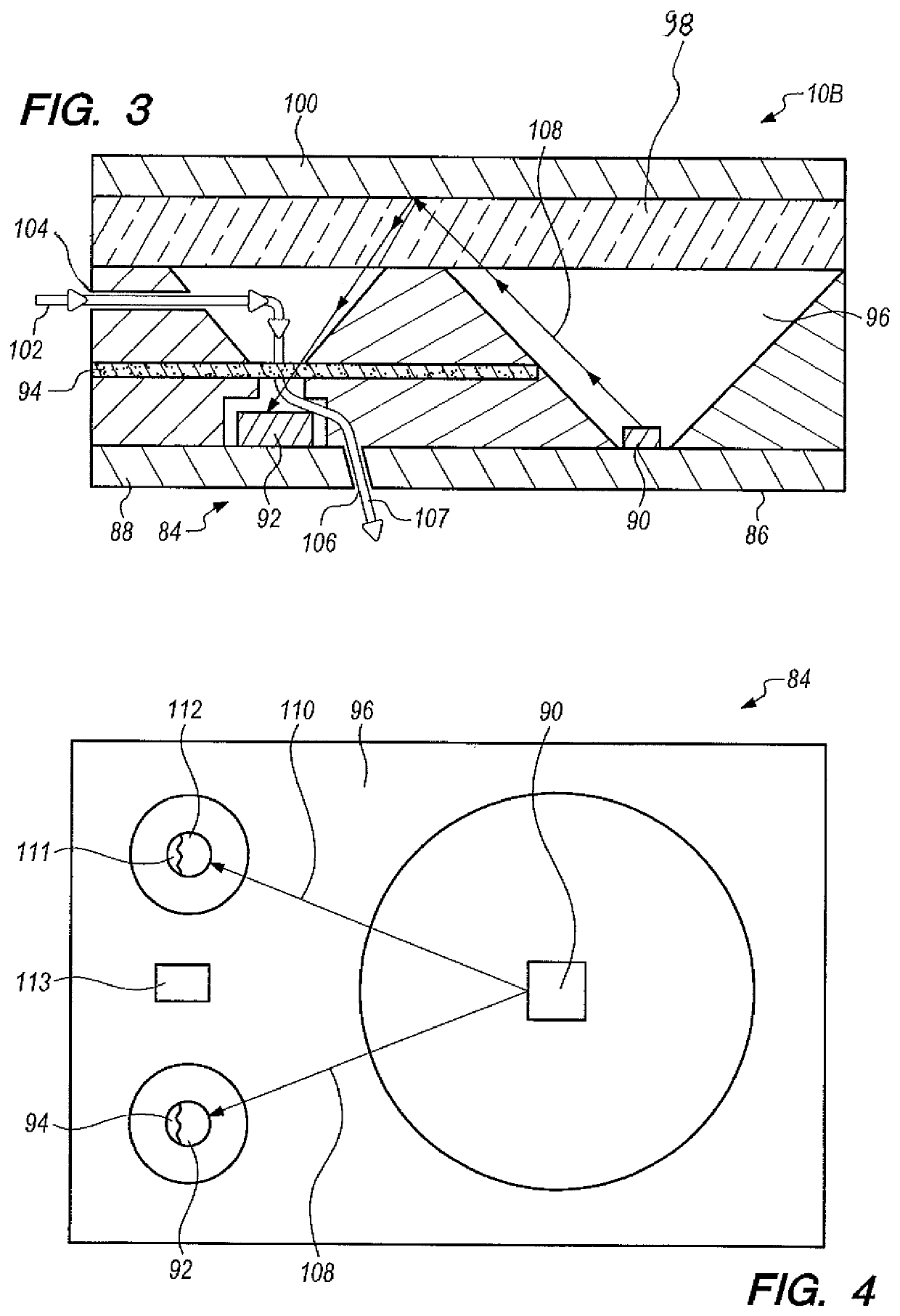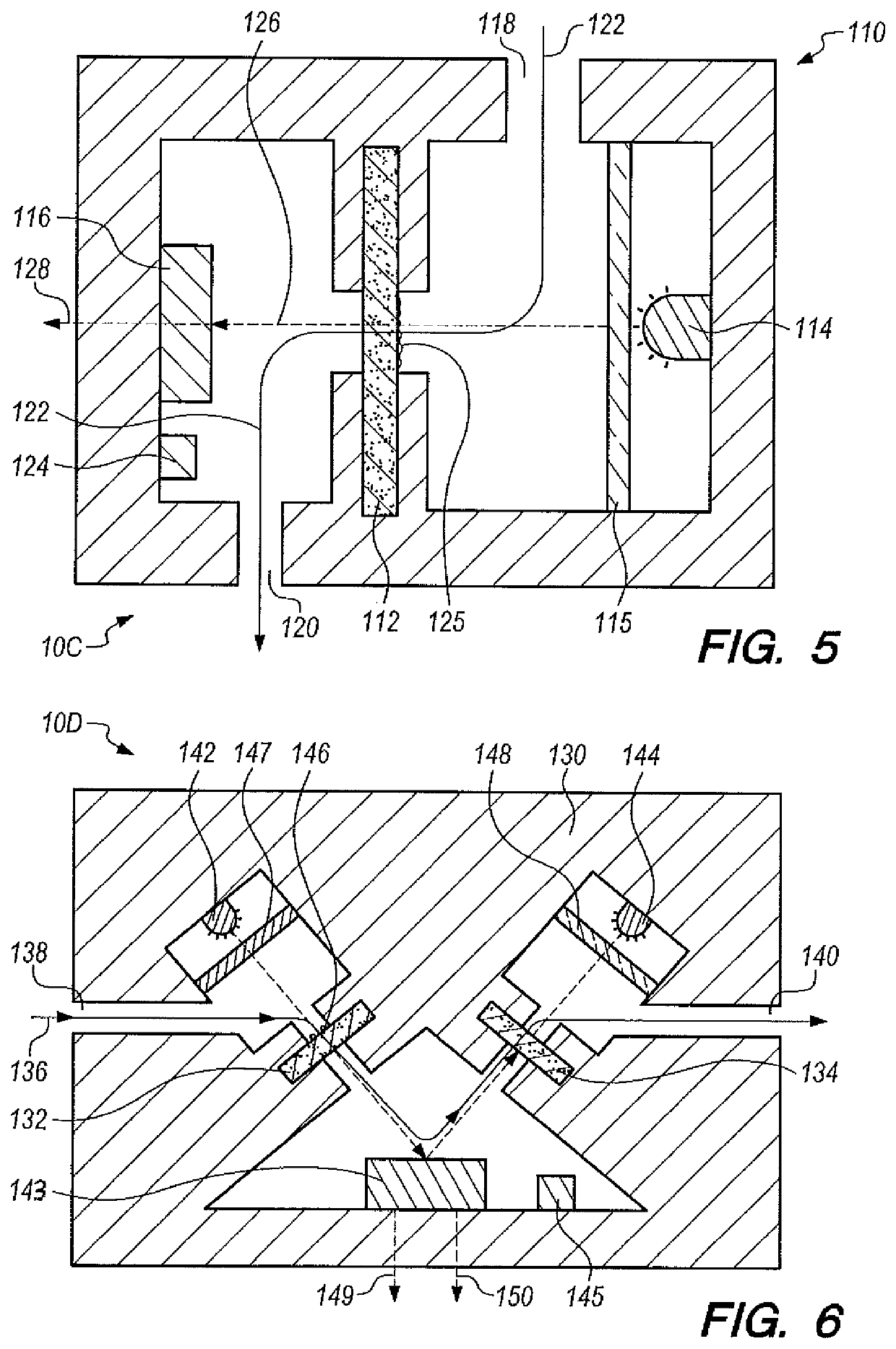Instrument for measuring airborne particulate matter
a technology of airborne particulate matter and instrument, which is applied in the direction of instruments, material analysis, transmissivity measurement, etc., can solve the problems of large bench-top units of aethalometers or bc instruments, extremely harmful to both human health and the environment, and the cost of acquisition of current bc instruments
- Summary
- Abstract
- Description
- Claims
- Application Information
AI Technical Summary
Benefits of technology
Problems solved by technology
Method used
Image
Examples
working example
[0065]Apparatus 10A was operated outdoors with a High Efficiency Particulate Air (HEPA) filter on inlet 42 for a two week period (a “training” period). FIGS. 7-9 represent data obtained therefrom. FIG. 7 shows that the sample and reference output voltages 76 and 78, FIG. 2, are clearly dependent on ambient conditions, oscillating in sync with the diurnal trends in temperature and relative humidity. FIG. 9 shows such results. It is theorized that the output voltage oscillations shown in FIG. 7 are likely the result of temperature sensitivity of LEDs 64 and 66, FIG. 2. LEDs 64 and 66 are rated to dim 0.3% for every 1° C. temperature rise, which is approximately represented by the observation of FIG. 5. Thus, the temperature sensitivity of LEDs 64 and 66 play a major role in the accuracy of apparatus 10A. Photodiode sensitivity (the voltage output per watt of incident light intensity) decreases by 0.01% for every 1° C. temperature rise, and likely also contributes to the diurnal-noctur...
PUM
 Login to View More
Login to View More Abstract
Description
Claims
Application Information
 Login to View More
Login to View More - R&D
- Intellectual Property
- Life Sciences
- Materials
- Tech Scout
- Unparalleled Data Quality
- Higher Quality Content
- 60% Fewer Hallucinations
Browse by: Latest US Patents, China's latest patents, Technical Efficacy Thesaurus, Application Domain, Technology Topic, Popular Technical Reports.
© 2025 PatSnap. All rights reserved.Legal|Privacy policy|Modern Slavery Act Transparency Statement|Sitemap|About US| Contact US: help@patsnap.com



